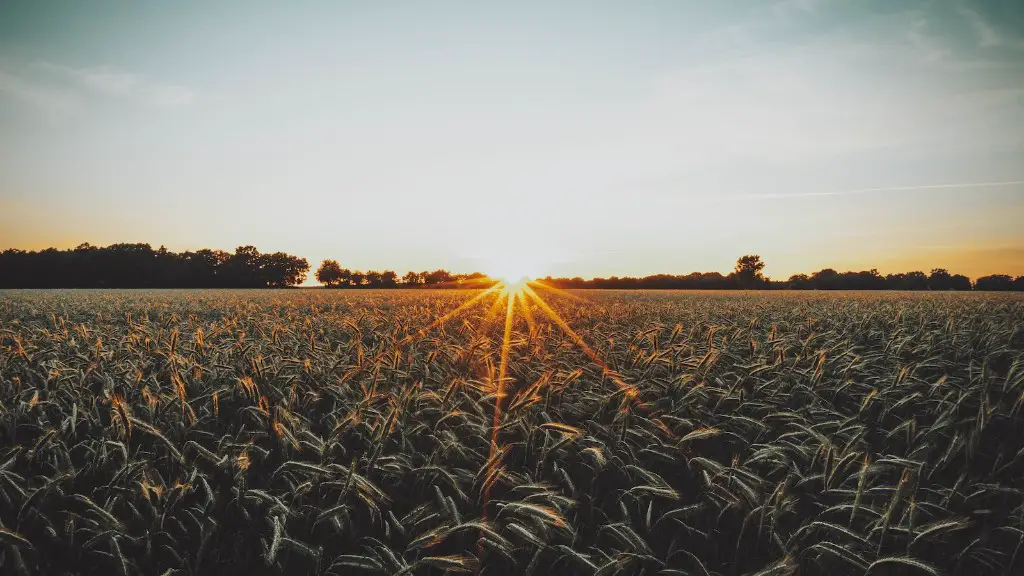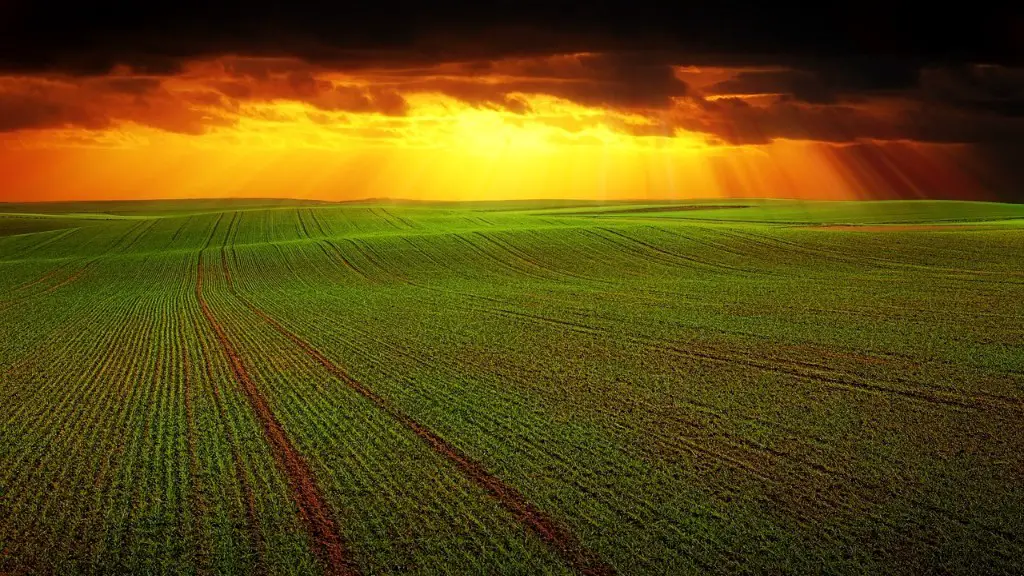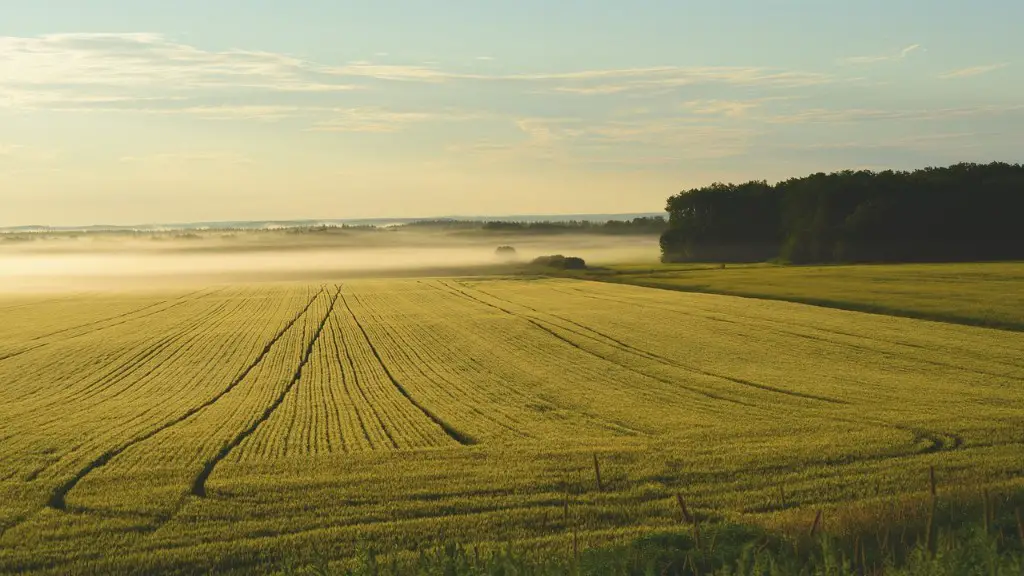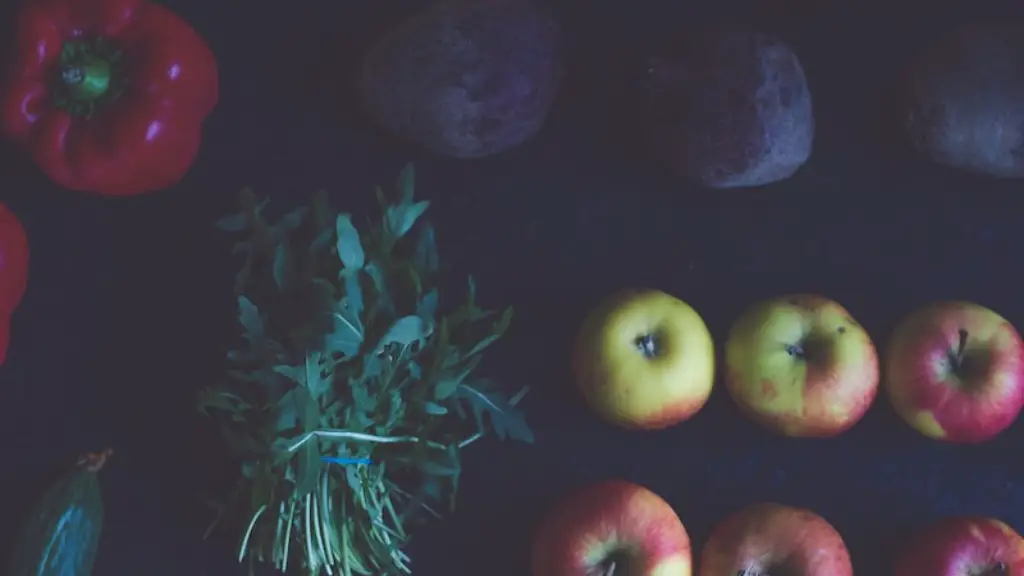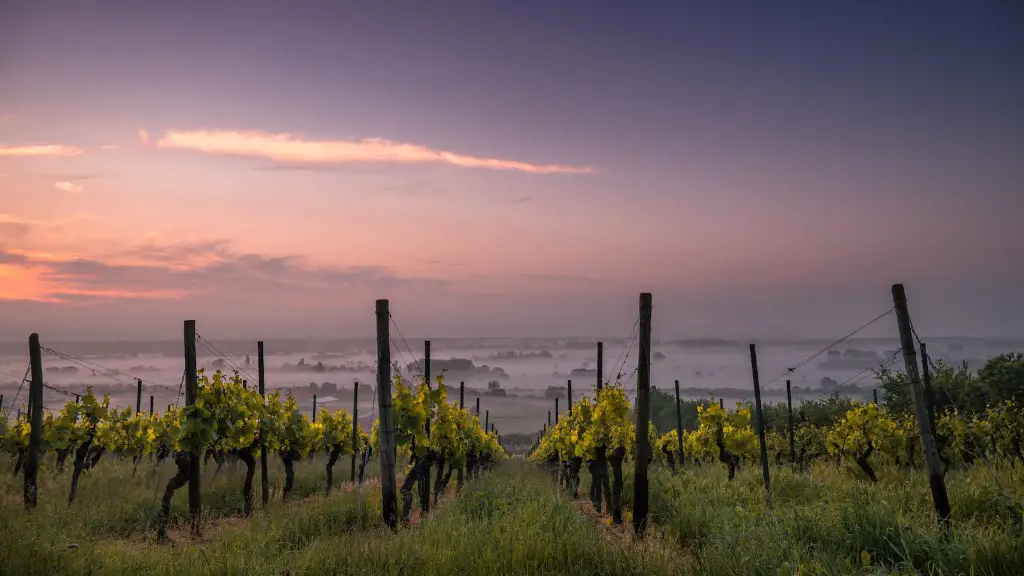Recent technological advancements have enabled the use of drones to aid farmers in crop-monitoring, evaluating disease and water levels, and improving the overall efficiency of agricultural production and delivery. A number of different types of drones can be used for purposes related to agriculture, and these have been beneficial in improving crop yields and increasing precision in crop management. Drones can help farmers in a variety of ways, from providing early detection of diseases, monitoring soil fertility and crop health, to providing valuable data on environment and weather conditions.
Drones allow farmers to identify problems quickly, preventing large scale damage from occurring. By combining images taken from multiple angles, they can capture an accurate picture of crop fields, measuring the health of plants and soil characteristics. This helps farmers determine which areas require more attention and which areas are doing well. Additionally, advanced sensors on drones can monitor temperature, humidity and water levels, allowing farmers to take corrective action before poor yields occur. This helps in reducing the losses due to poor crop yields.
Drones can also be used to map fields efficiently and accurately. This helps farmers in better field management and they can observe how each parameter changes over time. Furthermore, they can also be used to spray fertilizers in areas that require more nutrients. This helps farmers save money and time, as well as being more accurate than manual applications. Moreover, drones can be used for crop protection, scouting for weeds and pests.
Using drones for crop-monitoring also leads to better economic decisions. Data from the drone can be used to adjust the crops’ irrigation, fertilization, and other input according to the current conditions, thus leading to better economic results. Drones can also be used to prevent crop-theft, allowing farmers to keep track of their land and their crops.
Finally, drones can be used to detect crop diseases early on and prescribe the right treatments promptly. This can help farmers save time and money, as well as preventing losses due to disease spread. Furthermore, early detection allows farmers to use preventive measures and reduce the effects of potential pests and diseases more efficiently.
Soil Management
Drones can be used to monitor soil health efficiently. This can help farmers in improving the fertility of their soil and maximizing the land’s yield potential. With the help of drones, farmers can detect issues in soil health, such as compaction, drainage or fertility levels. Furthermore, drones can also help farmers in detecting soil water content and mapping land activity, giving them information about where to plant and how much water to use.
Drones can also be used to apply fertilizers according to the needs of soil and crops. By making use of low-altitude aerial surveys and infrared imaging, drones can help farmers in regulating the quantity and type of mineral needed each year, making fertilizer applications more efficient and cost-effective. Furthermore, newer drones equipped with multispectral sensors can detect the levels of nitrogen, potassium, phosphorus and other important minerals.
In addition to soil monitoring, drones can be used to map paddock models and detect weeds. Weed detection helps farmers take quick action before it reaches critical levels, saving time and money. Precision weed-mapping technology can also guide accurate herbicide applications, making sure that only the needed amount is applied where actually needed. Furthermore, drones with multi-spectral sensors can help farmers detect crop stress before it becomes evident to the eye.
Finally, drones can also help farmers with accurate and detailed elevation models, enabling them to more accurately plan terracing of land. This can help farmers save time and money by providing a detailed topographical study of their land, detecting erosion and helping maintain soil fertility.
Crop Management
By scanning fields with a crop-monitoring drone, farmers can collect data on irrigation levels and forecast future crop yields. With the help of precision farming and high-resolution images, farmers can better identify crop health, potential diseases, anomalies, check plant density and other aspects related to crop growth and yields. This helps farmers optimize crop production strategies, leading to better yields.
Drones equipped with sophisticated sensors and cameras can be used to detect different plant sick levels in a field. By using multi-spectral sensors, the drones can see different wavelengths of light, allowing the farmer to recognise the differences between healthy and unhealthy plants. This can allow farmers to take the necessary measures to prevent the spread of diseases.
Furthermore, drones can be used for efficient crop spraying, allowing farmers to target specific areas in need. This helps in making the application process more accurate and cost-effective. Additionally, drones can be used to monitor the effects of different fertilizers and pesticides, detect signs of disease and analyze the crop’s growth conditions. This helps in providing better insight into the efficacy of these agricultural inputs.
Finally, drones can be used to measure crop yield and track harvest cycles. This can help farmers optimize the harvesting season and ensure crops are picked at optimum maturity. Through the use of videos and images, farmers can assess the ripeness and size of crops, enabling them to better monitor harvesting. Additionally, images taken before and after harvesting can help farmers analyze which crop varieties are performing better, allowing them to adjust their crop plans accordingly.
Animal Monitoring
Drones can also be used for monitoring and taking care of animals. The drones can fly over the livestock and identify their condition, detect early signs of illness, and even monitor their movements to assess pasture coverage and adjust feeding availability. This can reduce the cost of herd monitoring and bring better yields due to improved health of the animals.
Furthermore, drones can also help detect grazing levels in meadows and pastures. By using NDVI, healthy areas can be distinguished from less healthy. This can help farmers understand which areas require more attention and take measures before vermin or weeds infest it. Additionally, drones can be used to check fence lines, helping farmers with the repair work before animals go astray.
Finally, drones can also be used to detect and monitor hazardous materials. This is especially helpful when it comes to animal health, as drones can help farmers quickly identify signs of hazardous pathogens, allowing them to take preventive measures before they spread. With the help of drones, farmers can also monitor animal movement, detect areas where animals escape, and even herd them back to the right zones.
Environmental Monitoring
Drones can be used for environmental monitoring to assess water contamination, air pollution and soil erosion. By using drones equipped with sophisticated sensors and cameras, farmers can detect levels and sources of contamination and pollution quickly and efficiently. This enables them to better understand the effects of specific pollutants, enabling them to develop better strategies for preventing further damage.
Furthermore, drones can be used to observe water scarcity and monitor surface water, allowing for better water management through efficient irrigation and re-allocation of resources. Drones can also detect infiltration levels and monitor water quality, helping farmers with better water management. Additionally, they can help detect water retention issues, helping farmers with the timely drainage of water before it damages crops.
Moreover, drones can be used to detect changes in natural habitats. By flying over forests and meadows, they can capture images that can be used to evaluate the effects of global warming. This can help farmers take preventive measures before the environment changes too drastically. Furthermore, drones can be used to observe weather patterns over time, helping farmers plan accordingly.
Finally, drones can be used to help farmers with pest control. With the help of infrared sensors, drones can detect wildlife such as rodents, deer and raccoons that may damage crops. This will enable farmers to take time-sensitive action quickly and efficiently, reducing economic loss due to pests.
Delivery and Logistics
Drones are increasingly being used for delivery and logistics purposes. By taking advantage of on-board computer systems and dynamic mapping, drones can make deliveries quickly and efficiently. This allows farmers to deliver their products to markets faster, thus improving the competitiveness of their businesses. Furthermore, drones also provide farmers with insights on where the products are during the process, thus reducing the risk of theft and damage.
In addition to delivery, drones can also be used for inventory management. By using drones equipped with cameras and sensors, farmers can easily and accurately count their inventory, allowing them to better manage their supplies and adjust delivery schedules accordingly. Moreover, this can also help in tracking and identifying inconsistencies in inventory count and taking necessary steps to solve them.
Furthermore, drones can also be used for tracking resources such as fuel, machinery and machinery parts. This helps farmers in understanding the resource usage in their operations, enabling them to plan accordingly. Additionally, this can also help farmers in preventing theft and damage, as they can track the resources more efficiently.
Finally, drones can also be used for mapping, helping farmers in understanding the topology of their land. By combining images taken from multiple angles and lasers, drones can provide farmers with a detailed and accurate map of their land, helping them better plan their operations. This is especially useful for remote areas, as the maps can be used even in the absence of GPS signals.
